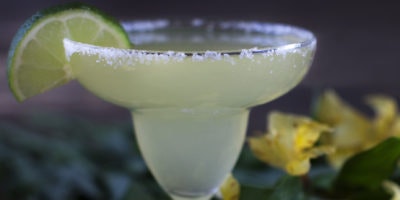Winston Churchill once said, “Those who fail to learn from history are doomed to repeat it.” Ironically enough, he was paraphrasing philosopher George Santayana. Nevertheless, as one of history’s most famous imbibers—among other accomplishments and feats of strength—it’s worth pointing to Churchill’s take, particularly when the discussion is focused on gin. For Sipsmith’s master distiller Jared Brown, the only way to make the best possible gin is to look back and learn from the successes and failures of gin’s history.
Any conversation with Brown may morph into a doctorate-level history lesson as he rattles off a dozen key dates—from 1689, all the way to the distillery’s creation in 2009, following the rise, the debaucherous “gin craze”, the fall, and now return, of gin. All of the historical and scholarly research Brown has undertaken though wasn’t merely for the sake of it, but was rather to guide his hand. “To understand what dry gin was in a historical context,” he says.
The Smithing of Sipsmith
So what is London dry gin, professor Brown? “London Dry Gin is a juniper-forward, citrus-backed, remarkably complex but balanced spirit.”
A key methodology note is that flavor cannot be added after distillation. It does, however, allow for a from-concentrate style of production, in which a portion of overly botanical-rich gin is distilled, and then basically diluted with neutral grain spirit. Brown insists that only full copper pot distillation of the gin, known as “one-shot” distillation, without over-concentration and subsequent dilution, offers the best possible end result.
Master Distiller Jared Brown / Photo Credit: Sipsmith
Brown decided upon on a 10-botanical recipe for Sipsmith including, of course, juniper berries. The other players: Belgian angelica root, Bulgarian coriander seed, Chinese cassia bark, Italian orris root, Spanish ground almond, Madagascan cinnamon bark, Spanish licorice root, lemon peel and Seville orange peel.
Each ingredient was painstakingly chosen, with specific varietals and countries of origin being indicated. When done correctly, and in the right balance, occasionally surprising and fine-tuned results are achieved. For instance, there isn’t any distinctive licorice flavor in the gin. “Licorice gives the perception of sweetness on the palate,” Brown says.
Meanwhile, the mash bill of the gin is entirely English wheat, providing a smooth, creamy mouthfeel. That English wheat mash bill is also distilled sans-botanicals for Sipsmith’s Sipping Vodka.
As for the stills themselves, they showcase Alembic-style copper helmets and are made by German producer CARL. The distillery recently added a third still to increase its output, with the 1,500-liter Constance joining Patience, and the original 300-liter Prudence. As opposed to using a botanical basket for vapor-infusion, eight of the botanicals in Sipsmith’s London Dry Gin are steeped for 16 hours. The remaining two are added right before distillation.
EXPERIMENTATION HAS ITS REWARDS
Elsewhere in the product lineup are exciting entrants such as V.J.O.P., or Very Junipery Over Proof, and London Cup. The V.J.O.P is bottled at 57.7% and incorporates juniper in three different ways, including the botanical basket they don’t use for their standard gin. London Cup is a modern take on the traditional cups and punches of the 1800s, and a presumptive Pimm’s-killer. Either can be enjoyed on its own or put to use in any number of cocktails.
Some of Sipsmith’s range / Photo Credit: Jake Emen
The V.J.O.P was a three year labor of love to perfect and create. “A big part of what we do here is experimentation,” Brown says. Those experiments continue today, best seen in their wall of house-infusions, as well as in a crowded lab room filled with hundreds of bottles. Gin fans seeking to get in on these experiments can join their Sipping Society, a club offering members the latest experimental riffs created on a tiny still dubbed Signet in the back of the distillery.
Even in experimentation though, the distillery is still often looking back. Brown says there’s two parts of the process: new product development, and old product discovery. The latter may lead to something such as Lemon Drizzle. This product is actually based on a recipe from the 1940s and incorporates several different varieties of lemon flavor, including both fresh and dried lemon peels along with lemon verbena.
It’s this dedication to history that enabled Sipsmith to make its own, when it became the first new copper pot distillery in London since 1820, setting off the UK’s modern gin craze in earnest. Hopefully with a bit less ruinous debauchery this time.
RECIPES
C’est Chic
Put Sipsmith’s London Cup to good use in this low-ABV refresher perfect for the warming weather.
– 40ml London Cup
– 20ml Cherry Brandy
– 20ml Lime Juice
– Ginger Ale
– Edible Flower
Build in an ice-filled glass and stir. Garnish with an edible flower.
C’est Chic / Photo Credit: Sipsmith
Scammed in Marrakech
And try out the V.J.O.P. in the Scammed in Marrakech, from Mattia Bianchi of Berber & Q.
– 70ml Sipsmith V.J.O.P.
– 50ml Lillet Rouge
– 30ml Clement Creole Shrubb Liqueur d’Orange
– 50ml water
Mix ingredients in a pitcher or mixing glass, funnel into a sealed glass container and chill. Pour into two ice-filled glasses. Spray with orange blossom water.
Bianchi recommends an entertaining-friendly approach of making and chilling the drink ahead of time.
Scammed in Marrakech / Photo Credit: Sipsmith
With Distiller, you’ll always know what’s in the bottle before you spend a cent. Rate, Review and Discover spirits! Head on over to Distiller, or download the app for iOS and Android today!



